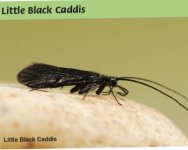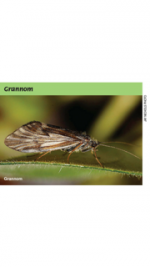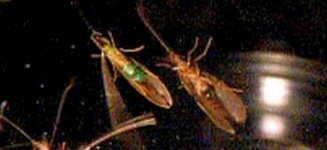afishinado wrote
^ excellent info and advice.
Check out a pic of grannom cases below >
I post this just about every spring on here:
The following is some great info about PA grannoms posted on Troutnut by Lloyd Gonzales the author of Fly-fishing Pressured Water (a good book to read in itself) >
Grannom, American Grannom, Shadfly, Apple Caddis, Mother's Day Caddis, and Black Caddis are all common names applied to Brachycentrus species. Mother's Day Caddis is the most common Western nickname for Brachycentrus occidentalis, a Western "grannom," but I have also heard this name applied generally to "grannoms" here in the East.
In PA, it is useful to think of "dark grannoms" and "light grannoms." The species your flies are imitating are more typical of the dark grannoms. The "apple caddis" is a light grannom. Most of the important (PA) Brachycentrus species have overlapping hatch periods, so either dark or light imitations (or both) can be called for, depending on the stream.
Here's my current breakdown for important PA species:
Brachycentrus numerosus--Penn's Creek Caddisfly, Dark Grannom, Dark Shadfly; adults have dark-mottled wings and dark blackish green bodies; pupae usually dark with green lateral stripes and dark wingcases.
Brachycentrus lateralis--Striped Grannom, Dark Grannom, Black Caddis; adults have dark wings and pupae are typically dark olive with tan lateral stripes and dark wingcases.
Brachycentrus nigrosoma--Little Dark Grannom, Little Black Caddis; adults/pupae are smaller and darker than numerosus.
Brachycentrus appalachia--Apple Caddis, Light Shadfly, Light Grannom; adults have very light tannish or grayish wings (almost white when freshly emerged) and apple green bodies; pupae are apple green with tan wingcases.
(Brachycentrus solomoni and incanu are also found in PA. B. solomoni is very similar to numerosus, and incanu is rather rare.)
Most "grannom" activity in PA occurs from mid-April to mid-May. During that time, if you carry imitations of dark and light grannoms (adults and pupae) in sizes #14-16, you should have most bases covered.
You are right that the adult imitations are seldom very good during the emergence (pupa or emerger patterns are best). During the egg-laying activity, however, they are often very effective. The fish may prefer skittered, dead-drifted, or wet adult imitations depending upon the concentrations around their lies.







